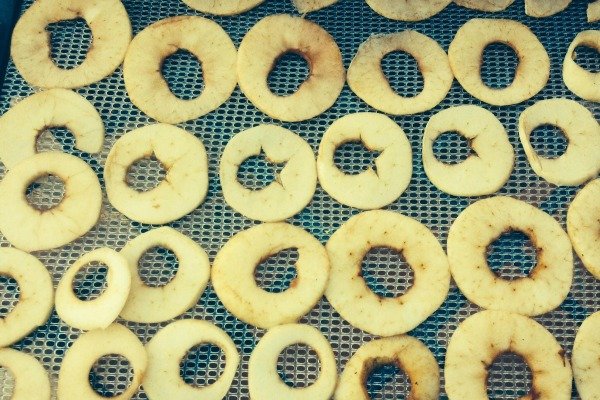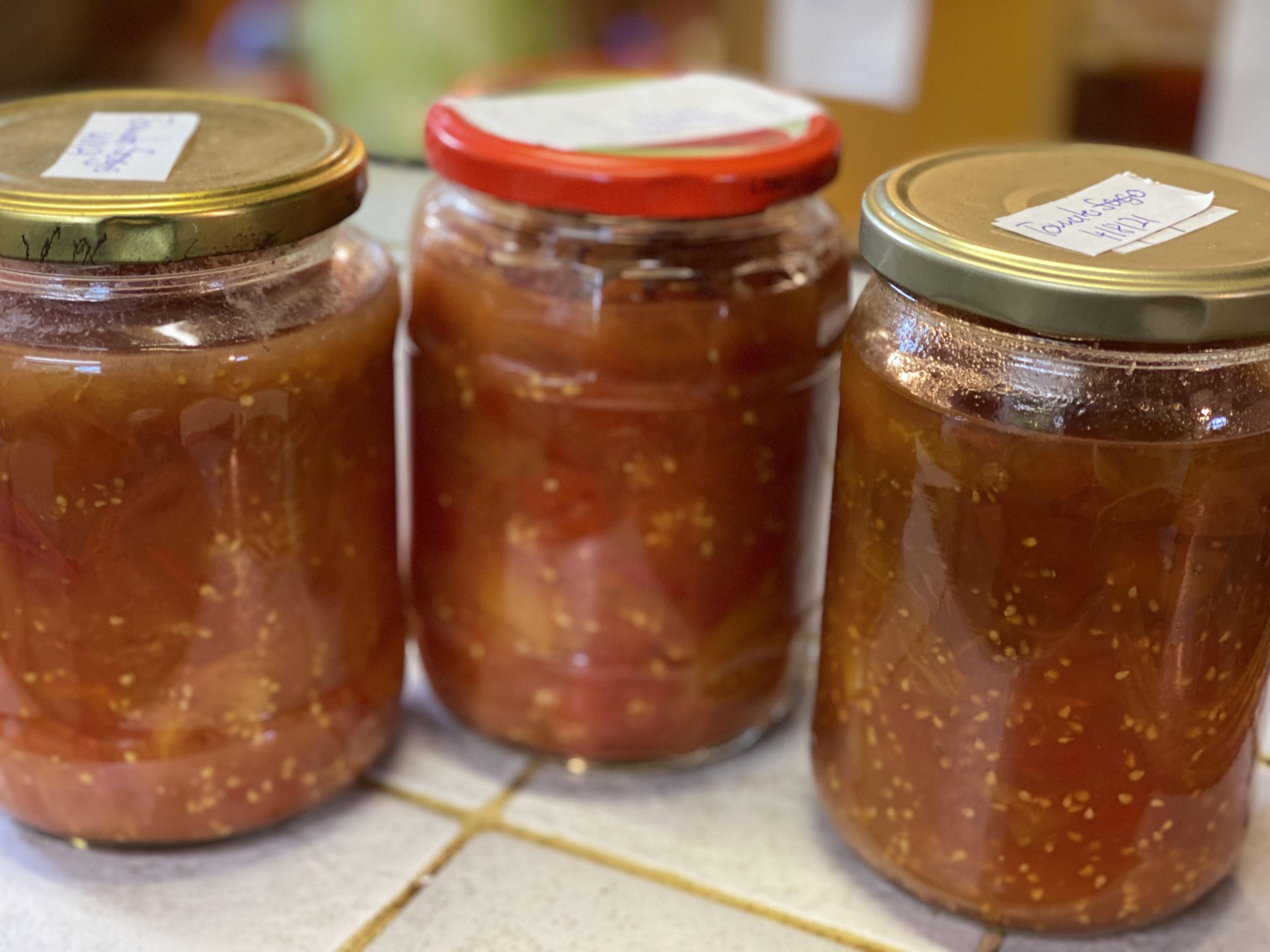Storing and preserving essentials – Make your garden produce last
For those of us who grow our own vegetables, herbs and fruit preserving and storing is an essential skill to make the most of the surplus of our harvest. In fact careful planning of sowing, planting and harvesting is the basis of being able to preserve the fruits of our labour.
Choosing the best method should be guided by the aim to keep the nutritional value of our garden produce. Bottling and more recently freezing are the two industrial methods of preserving food that nearly wiped out all traditional methods where preserving is done as naturally as possible with minimal use of heat or cold.
If the GIY movement does embrace the artisanal over the industrial way of preserving we can win back lost territory and contribute to the development of a new food culture in Ireland and the signs are: We have already started! I learned preserving from my parents and grandparents so let your children and grandchildren help you and keep the traditional methods alive.
The Basics
Vegetables and fruits to be stored and preserved have to be ripe but not over-ripe and of best quality. Ideally we process fresh produce straight after harvesting. Cleanliness is of utmost importance and containers, jars and bottles must be clean and sterile. An often neglected part in preserving is labelling and record keeping. Colour coding in the freezer works wonders. Check and observe regularly and discard old and spoiled food. And for those of you who preserve more than you grow you are “allowed” to buy in local or organic produce without feeling guilty. (I recommend you buy in produce for preserving when in season.)
The Enemies
When we preserve we have to fight four enemies, namely bacteria, enzymes, fungi, and yeasts, who will destroy our food, if we don’t take control.
Bacteria can be divided in good ones used in lactic acid fermentation and bad ones as in pathogenic bacteria. Extreme heat kills them, cold, salt and acidity slows their activity.
Enzymes are proteins that help break down food as we digest it. Extreme heat stops them permanently, extreme cold stops them temporarily.
Fungi produce spores and our food can become mouldy. Freezing and pickling will stop their growth, but it is important to prevent the spores to reach the food in the first place.
Yeast can be destroyed by heat and slowed down by cold, they are not dangerous and are our allies when making cider or wine or brew beer.
The Methods
Storing is an ideal method for root vegetables like potatoes (hession sacks), carrots and parsnips (in sand) and for cabbages, beetroot and pumpkins. The ideal conditions are dark, ventilated and below 7° Celsius and because most of us don’t have a cellar herein lies the challenge. Any serious gardener has to look at a larder with temperatures from 8° - 15° Celsius for storage. Try the plastic bag method: 2 days after harvesting store in black perforated plastic bags. Avoid condensation! Best temperature 8° -12° Celsius. Note: Do not store apples and potatoes together!
The members of the cabbage family for example are all different when it comes to storage: Stored cool and moist broccoli lasts a week, cauliflower 2 weeks, Brussels sprouts 3 weeks and cabbage 6-8 months. Kale can be kept in the ground till harvest. So freeze broccoli after blanching, pickle or ferment cauliflower or just produce enough for immediate consumption, harvest lower Brussels sprouts first and just harvest for cooking, store heads of cabbage cool at around 7-10 Celsius or ferment as sauerkraut.
Leeks, kales, Brussels sprouts, Jerusalem Artichokes and Salsify can be kept in the ground, if the beds are free of weeds and the ground is not waterlogged .
Drying is the best method for onions and garlic. It is also the best method for herbs. Without water harmful bacteria cannot grow. Harvest your herbs before they start flowering and ideally in the morning. Hang to dry in a paper bag and finish the process in the oven or a dehydrator at 40° - 50° Celsius until the leaves are brittle and break like glas, then store in airtight and dark containers.
It you want to dry fruits and vegetables you really need to invest in a dehydrator! Sundried tomatoes in Ireland are a real challenge. For diehards: Try the hatchback of your car!
Lactic acid fermentation is a very old and traditional method that uses lactic acid bacteria to create a sour, acidic environment where pathogenic bacteria cannot survive. Baking sourdough bread, making “Sauerkraut” and fermenting milk for all sorts of cheeses with the help of lactic acid has become an intrinsic part of the Wieland family in producing some of our own food.
One of the most interesting facts to know about this preserving method is that it works entirely without electricity and you don’t need to buy the lactic acid bacteria. Just provide the right environment where they can feast on natural sugars and starch in vegetables. Fermented food has gained a high reputation for its health benefits, because it is high in Vitamin C and also A. Lactic fermentation improves digestion, detoxifies the liver and produces Vitamin B12.
Basic recipe for fermenting vegetables in salt brine:
(Please note that chlorinated water can inhibit fermentation. Use filtered water or spring water.)
• Fill vegetables and spices into glass jar, add whey if you have it or use 1 tbsp of buttermilk as a starter and fill in enough water to cover vegetables. Leave 2 cm space between vegetables and lid and close tightly. Leave in a warm place for 10 days. After 2-3 days the fermentation starts and you see some bubbles appearing. Through this process the oxygen is used up and the jar seals itself.
• Move jar to a cool place after 10 days. Vegetables are ready to eat after 5-6 weeks.
Sterilising kills bacteria through heat and is the method for industrial bottling or canning. This method results in long lasting preserves of less nutritional value and little flavour. Try the new “Hot Fill-ins” a relatively new method that in our household has substituted sterilising. We use it for preserving fruits and vegetables like tomatoes, cucumber and peppers. We make jam without sugar, ketchup and tomato sauce and gherkin pickles very quickly with this easy and energy saving method that was made possible with the invention of the Twist-off jars.
The seven steps to Hot Fill-in heaven:
1. Clean jars (you can recycle glass jars) and let them air-dry
2. Wash and peel fruit/vegetables if necessary and cut or mash
3. Sterilise jars in one pot
4. Bring mashed fruit to the boil in another pot
5. Fill boiling mixture in hot jars
6. Close with twist-off lid.
7. Place upside down for a minute then let cool down covered with a towel
Note: (If you use whole vegetables (gherkins, beet root), place them in the jar and fill up with boiling hot water, slightly salted or with a water/vinegar mixture.)
Freezing stops bacteria and enzymes to breed and multiply. If you have a freezer, read the instructions and make sure you know about the quick freeze button and the quick freeze compartment! Blanch your produce before freezing to retain, colour and texture.
Vinegar creates an acidic environment that suppresses the growth of micro-organisms. I recommend pickling gherkins in vinegar-water.
Oil keeps water and air out and therefore prevents micro organisms to grow. You can try flavoured oils or make pesto with oil.
Salt is anti bacterial and anti fungal, but too much salt is not good for your health. I use salt in preserving as a spice or an ingredient but not as a major preserving method. Our concession last year was home grown lemons in Tibetan mountain salt!
Alcohol is also anti bacterial and anti fungal and a much more interesting way of preserving, especially in Rumtopf as you can preserve seasonal fruits for the most fantastic Christmas or New Years aperitif. Use a high percentage rum (40%) or ad a few tablespoons of Vodka to 20% rum. You can also produce Fion Lonnrach by fermenting Dandelions, Elderflowers and Meadowsweet Flowers.
Alternatives to the use of sugar
Last not least preserving without sugar is desirable and easy. Caregeen, natural pectins made from apple peel and pear and apple syrups are alternative gelling agents and you can sweeten with honey.
.




